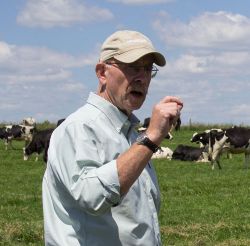First Cut: Bad timing |
| By Mike Rankin, Managing Editor |
|
|
Herbert Hoover received plenty of accolades prior to his presidency for a wide range of humanitarian efforts. He was overwhelmingly elected as our 31st president in 1928.  Mike Rankin Politics and personal beliefs aside, Herbert Hoover was largely a victim of bad timing. Who among us hasn’t also been on the losing end of a timing decision? Has anyone cut hay prior to a previously unpredicted rain event? Who bought Facebook stock two months ago? There’s an old cowboy proverb that goes something like this: Timing has a lot to with the outcome of a rain dance. No truer words have ever been spoken. So many of our successes and failures in life and work are purely a function of timing. Good timing can be the residue of hard work, experience, knowledge, and foresight. It also can occur because of nothing more than blind luck. Conversely, like Hoover’s experience, sometimes bad timing is simply the result of factors beyond our control, or bad luck. I’ve always maintained that timing is perhaps the greatest factor governing a farm’s success and profitability. Sure, there’s plenty of new “tech” that is touted to farmers and ranchers and these tools can also enhance financial success. But without good timing, their utility can quickly become neutralized. Even the marketers of new technology will agree with this premise. Perhaps nobody lives with the consequences of good and bad timing more so than a forage producer. Let’s be frank: There are some producers who seem to consistently put up good-quality forage every year. These are the ones who are always ready to go, even given the tightest of harvest windows. Others seem to constantly struggle with forage yield and quality issues, seemingly never able to pull the trigger when it needs to be pulled. Moving to the pasture, some livestock producers never have a problem with overgrazing and are able to time cattle movement from paddock to paddock with thoughtful precision. They seem to know when to supplement hay and when not to. Their decision-making is impeccable, and they are mostly rewarded for their attention to timing. Unlike seed, feed, fertilizer, machinery, or polywire, timing is not a sold commodity, yet the impact on profitability may be much greater. Why? It’s because good and poor timing often cost the same in terms of real dollars, but the outcomes of good and poor timing are dramatically different when forage quality, yield, and animal performance are considered. This is the case whether we are talking about planting dates, harvest dates, timing of weed control, fertilizer applications, or timing of cattle movement on pastures. Good timing is often a residue of good planning. Planning involves the ability to be nimble and quickly change plans on the fly when unforeseen circumstances, such as drought, present themselves. We can’t control weather or markets, but we can control our timing decisions. Further, good timing is a learned skill. As we move into the 2018 growing season, put timing at the top of the priority list. This article appeared in the April/May 2018 issue of Hay & Forage Grower on page 4. Not a subscriber? Click to get the print magazine. |
